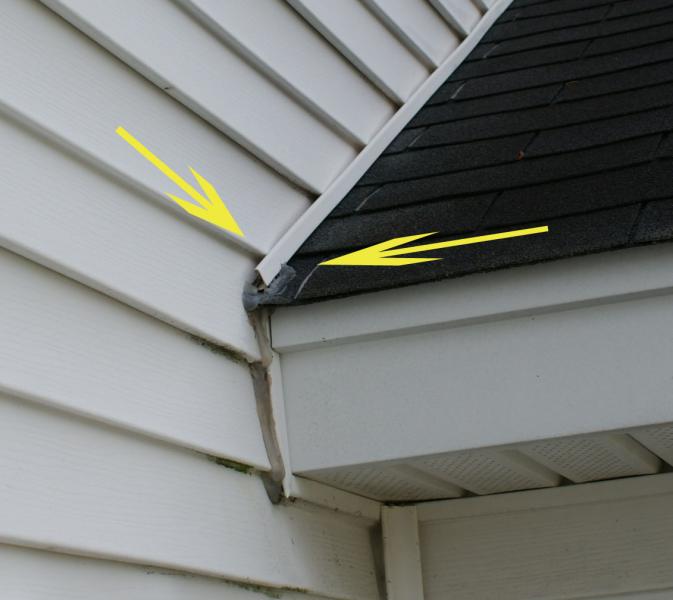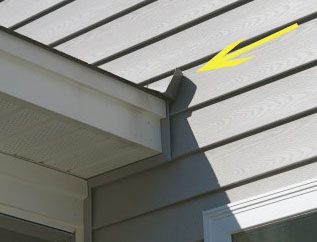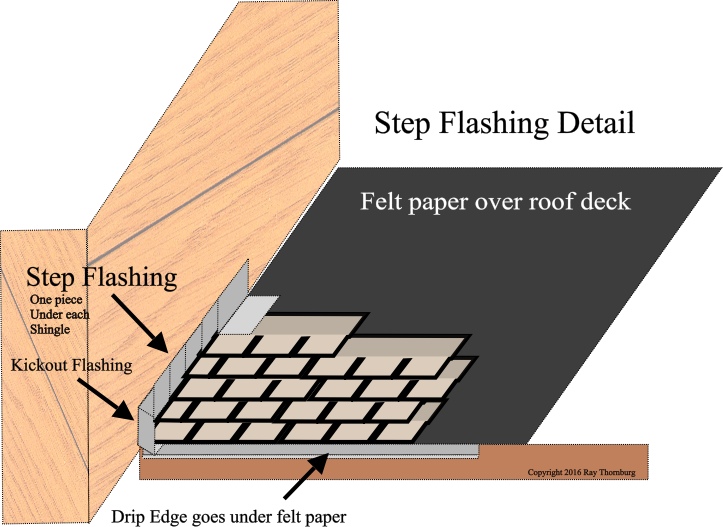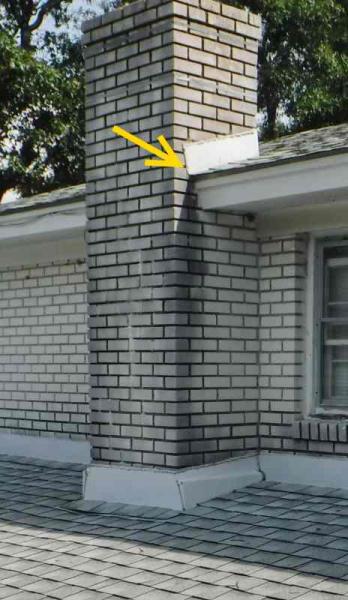Kickout flashing should be installed whenever a roof surface meets a wall. In the past many homes were built using only the step flashing method and as a result moisture could drain or seep behind the siding and eventually cause damage. Below is a home without kickout flashing.
In the picture above you can clearly see that water can be driven behind the siding. In this case it did cause moisture damage that was apparent from inside the home. Often the damage is hidden behind the siding material on the outside and wall covering on the inside of the home. You can also see the feeble attempts at fixing this problem with caulk. The next picture shows an example of kickout flashing done right.
Moisture intrusion on this home was exasperated by a lack of kickout flashing (yellow arrow) in the picture above. You can see the staining on the brick.
Although it is often overlooked; brick houses can benefit from kickout flashing too. Because brick is porous to a certain degree it can soak up moisture. Rain water dripping down the side of a chimney for instance can cause algae growth which can be unsightly. However some moisture is bound to be absorbed by building materials next to the brick veneer and that will cause problems. It can also be difficult to flash brick which is soaking up moisture from higher up.





